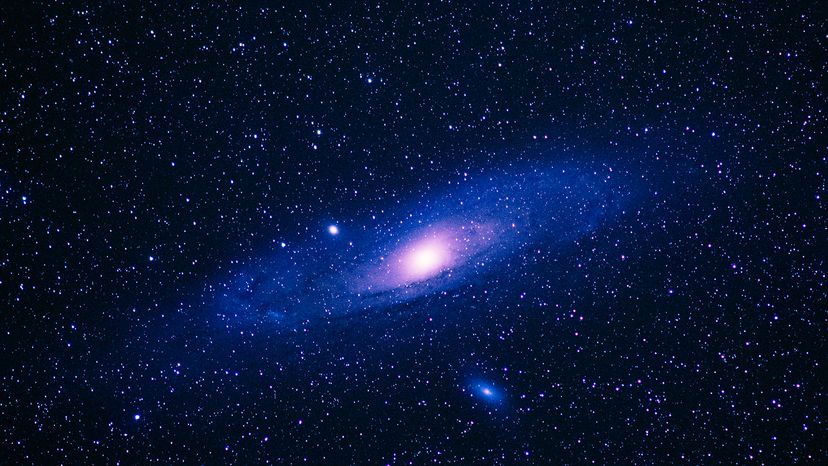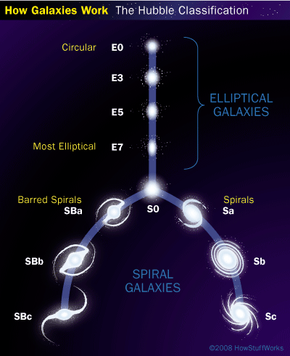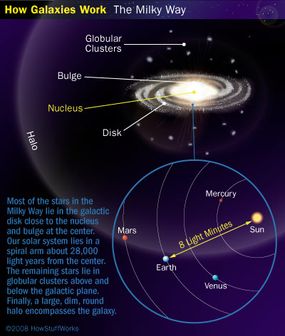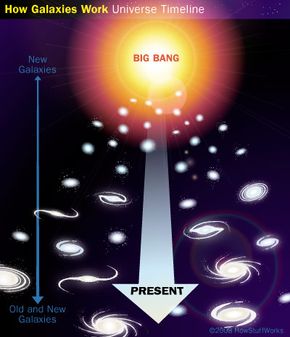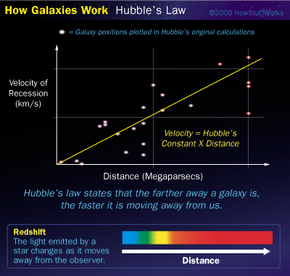When you look at a normal galaxy, most of the light comes from the stars in visible wavelengths and is evenly distributed throughout the galaxy.
However, if you observe some galaxies, you'll see intense light coming from their nuclei. And if you look at these same galaxies in the X-ray, ultraviolet, infrared and radio wavelengths, they appear to be giving off enormous amounts of energy, apparently from the nucleus.
These are active galaxies, which represent a very small percentage of all galaxies. There are four classifications of active galaxy, but the type we observe may depend more upon our viewing angle than structural differences:
- Seyfert galaxies
- Radio galaxies
- Quasars
- Blazars
Black Holes
To explain active galaxies, scientists must be able to explain how they emit such large amounts of energy from such small areas of the galactic nuclei. The most accepted hypothesis is that at the center of each of these galaxies is a massive or supermassive black hole.
Around the black hole is an accretion disk of rapidly spinning gas that's surrounded by a torus (a donut-shaped disk of gas and dust). As the material from the accretion disk falls into the area around the black hole (the event horizon), it heats to millions of degrees Kelvin and is accelerated outward in the jets.
Seyfert Galaxies
Discovered by Carl Seyfert in 1943, these galaxies (2 percent of all spiral galaxies) have broad spectra indicating cores of hot, low-density ionized gas. The nuclei of these galaxies change brightness every few weeks, so we know that the objects in the center must be relatively small (about the size of a solar system).
Using Doppler shifts, astronomers have noticed that velocities at the center of Seyfert galaxies are about 30 times greater than those of normal galaxies.
Radio Galaxies
Radio galaxies are elliptical (0.01 percent of all galaxies are radio galaxies). Their nuclei emit jets of high-velocity gas (near the speed of light) above and below the galaxy — the jets interact with magnetic fields and emit radio signals.
Quasars
Quasars (quasi-stellar objects) were discovered in the early 1960s. About 13,000 have been discovered, but there could be as many as 100,000 out there [source: A Review of the Universe]. They're billions of light years away from the Milky Way and are the most energetic objects in the universe.
The extreme brightness of quasars can fluctuate over daylong periods, which indicates that the energy is coming from a very small area. Thousands of quasars have been found, and they're believed to be emanating from the cores of distant galaxies.
Blazars
Blazars are a type of active galaxy — about 1,000 have been cataloged [source: A Review of the Universe]. From our viewpoint, we are looking "head on" at the jet emanating from the galaxy. Like quasars, their brightness can fluctuate rapidly — sometimes in less than one day.
Starburst Galaxies
Most galaxies have low rates of new star formation — about one a year. However, starburst galaxies produce more than 100 a year. At this pace, starburst galaxies use up all of their gas and dust in about 100 million years, which is short compared to the billions of years that most galaxies have been around.
Starburst galaxies emit their intense light from a small area of newly formed stars and supernovae. So, astronomers think that starburst galaxies represent some short phase in how galaxies change and evolve, perhaps a stage prior to becoming an active galaxy.
